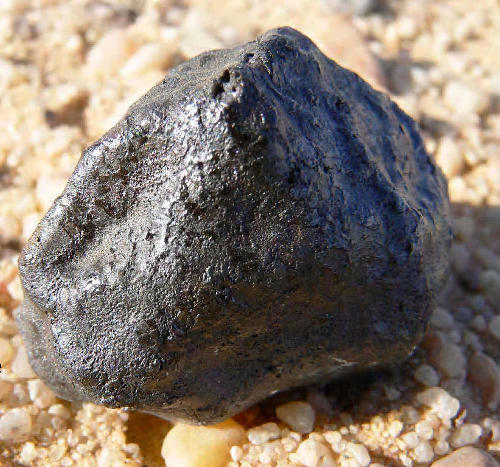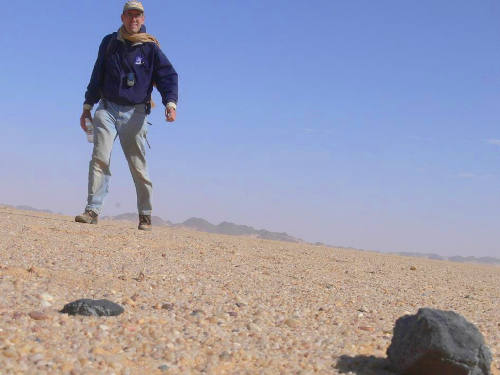Using AI to control energy for indoor agriculture
30 September 2024
Published online 17 April 2018
Diamonds in meteorites, remnants of a lost Mercury-to-Mars-sized planet, offer astronomers a glimpse of the early solar system.

© NASA
In the decade since, analysis of the Almahata Sitta meteorites has informed scientists about the protoplanets –– the building blocks of today’s terrestrial planets –– that inhabited the early solar system. New research analysing the tiny crystal inclusions embedded within diamonds in the meteorites and published today in Nature Communications1 provides solid evidence of the protoplanets’ existence.
Most of the fragments are ureilites, rare, carbon-enriched meteorites whose origin remains a mystery. The carbon in ureilites is in the form of graphite and diamond, and in 2010 an international collaboration showed that the Almahata Sitta ureilite MS-170 contains unusually large diamonds.
Based on this, the researchers argued that the diamonds did not form in the heat and pressure of an impact, as widely supposed, but rather inside the ureilite parent body (UPB), a hypothetical object in the early solar system about the size of a large asteroid (around 1000 km).
Now, a team led by Philippe Gillet of the Ecole Polytechnique Fédérale de Lausanne in Switzerland, who was also involved in the earlier research, has further refined the picture based on information from minerals embedded in the diamonds. Farhang Nabiei, the study’s lead author, “discovered the [mineral] inclusions while he was looking at the detailed relationships between graphite and diamond,” according to Gillet.
Electron microscopy and spectroscopic analysis showed that most of these inclusions are iron-rich sulfide crystals which could only have formed at high pressures. Together with the earlier evidence from the diamond crystals, this shows that the UPB was probably a Mercury-to-Mars sized protoplanet.
Gillet says the findings were a surprise, adding that models “have shown that such bodies populated the early solar system, but no clear evidence of their remnants has been found before.”

© NASA / SETI / P. Jenniskens
However, he points out that other mineral signatures in the meteorites suggest lower temperatures and pressures, raising questions about the history of ureilites and the UPB.
Gillet’s team is examining other Almahata Sitta meteorites to see how broadly their findings apply and what other secrets these celestial diamonds hold.
“Almahata Sitta is continuing to amaze the community,” says Meier. “That meteorite really turned into a scientific treasure trove.”
doi:10.1038/nmiddleeast.2018.50
Stay connected: